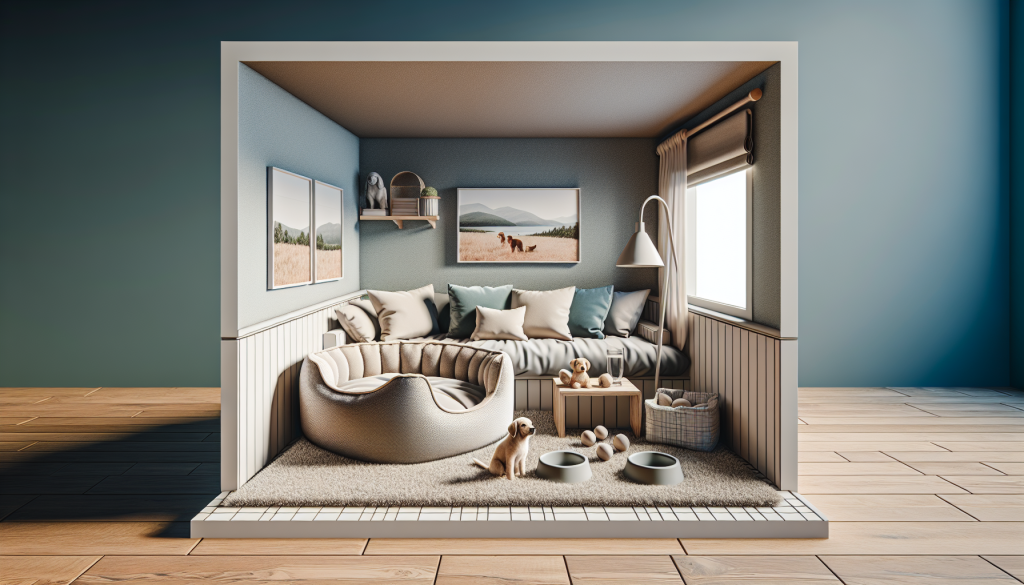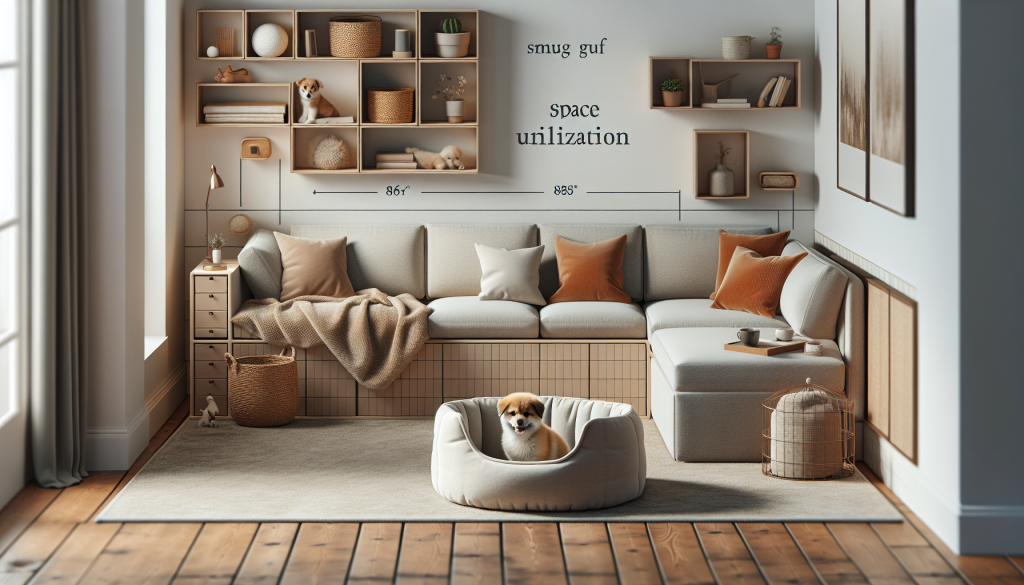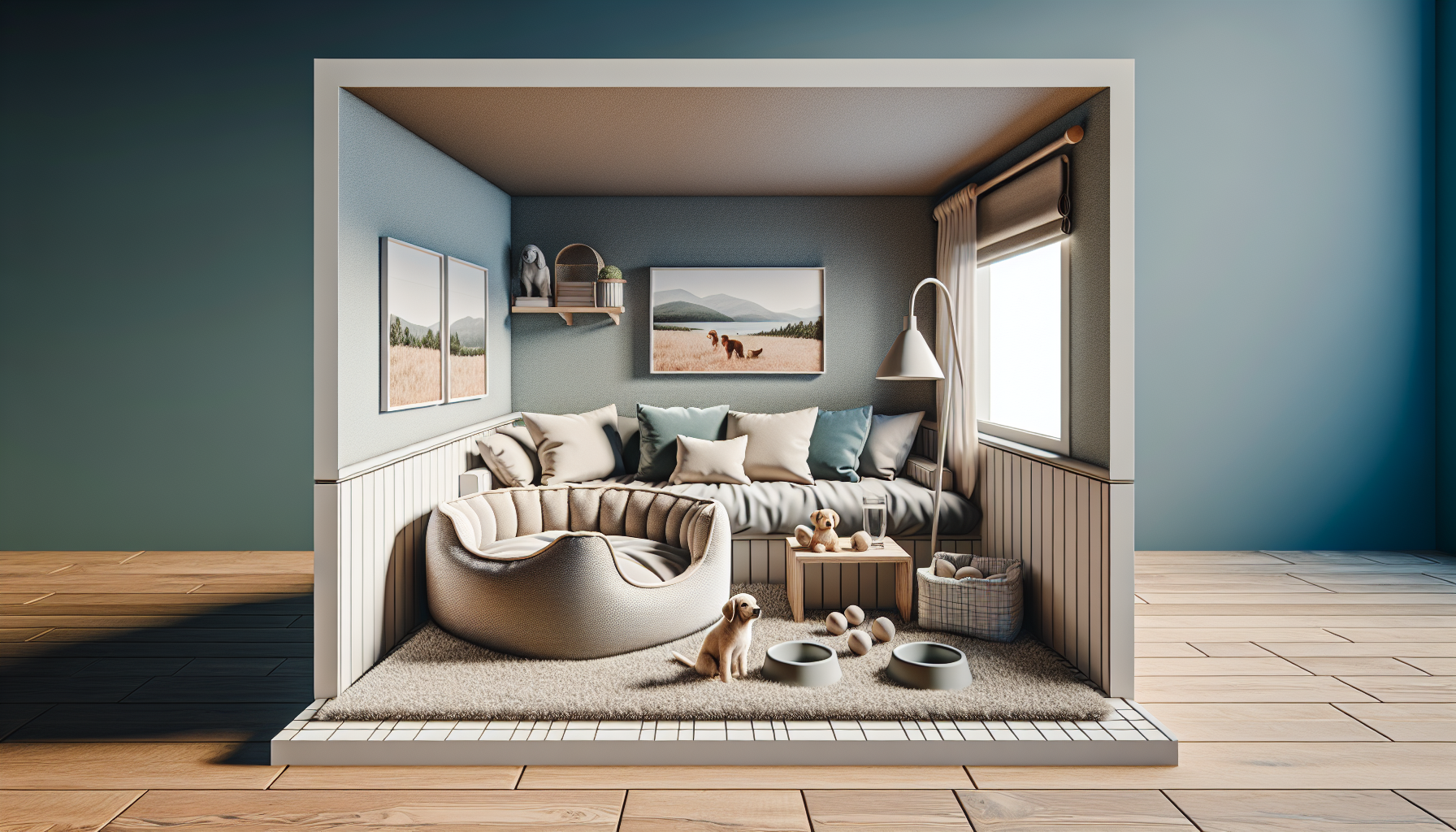Finding the perfect spot for your dog’s bed in a small house can be a challenge. You want your furry friend to be comfortable and have their own space, but you also have limited space to work with. So, where should a dog bed be placed in a small house? Well, the answer lies in finding a balance between accessibility, comfort, and security for your pet. In this article, we will explore some practical and creative options for placing your dog’s bed in a small house, ensuring they have their own cozy spot while maximizing the space available.
Factors to Consider
Size of the Dog
When determining the placement of your dog’s bed in a small house, the size of your furry friend is an important factor to consider. If you have a larger dog, you will need to allocate more space for their bed. On the other hand, if you have a smaller breed, you may have more flexibility in terms of placement options.
Layout of the House
Take a close look at the layout of your house to find the most suitable spot for your dog’s bed. Consider the flow of foot traffic and the available space in each room. You’ll want to choose a location that doesn’t obstruct walkways or create a tripping hazard.
Temperature and Ventilation
Dogs are sensitive to temperature, so finding a spot for their bed that provides comfort is essential. Avoid placing it in areas that are too hot or cold. Additionally, ensure there is proper ventilation in the chosen location to keep your furry friend cozy.
Noise Level
Some dogs are easily startled by loud noises or constant commotion. If your dog is noise-sensitive, it’s advisable to place their bed in a quieter area of the house, away from sources of noise such as the television or the kitchen.
Access to Outdoors
Consider whether the chosen location allows your dog easy access to the outdoors. If your furry friend frequently needs to go outside for bathroom breaks or enjoys spending time in the backyard, placing their bed near an exit can make their life easier.
Location of Power Outlets
If you plan on using an electric dog bed or need to keep a heating or cooling pad plugged in, it’s important to select a location near power outlets. This will ensure you can keep your dog’s bed comfortable year-round without the hassle of extension cords.
Proximity to Family Areas
Dogs are social animals and often enjoy being near their human family members. Placing your dog’s bed in an area that is in close proximity to the main family areas, such as the living room or kitchen, can help strengthen the bond between you and your furry friend.
Proximity to Noise Sources
While it’s important to find a quiet spot for your dog’s bed if they are noise-sensitive, it’s also important to consider the proximity to noise sources that are a regular part of their daily life. For example, if your dog feels comforted by the sound of the television or the washing machine, placing their bed in the room where these noises occur might be beneficial.
Visibility
Consider your dog’s need for visibility. Some dogs enjoy being able to see the entire room from their bed, while others prefer a cozier spot tucked away from too much stimulation. Observe your dog’s behavior and preferences to determine whether they prefer a more open or secluded location.
Existing Furniture and Décor
Take into account the existing furniture and décor in your home when choosing the placement of your dog’s bed. You’ll want the bed to fit seamlessly into the overall aesthetic of the room, ensuring it doesn’t clash with the existing style.
Possible Locations
Living Room
The living room is often the heart of the home and a popular choice for placing your dog’s bed. It provides easy access to family members and usually has a comfortable and inviting atmosphere. However, consider the available space and potential foot traffic when choosing the specific location within the living room.
Bedroom
Many dog owners like to have their furry friends close by during the night, making the bedroom an optimal choice for placing their bed. This location ensures you and your dog can enjoy each other’s company and provides a sense of security for your pet.
Kitchen
For dogs who enjoy supervising meal preparations or receiving occasional tasty treats, the kitchen can be an excellent location for their bed. Just make sure to select a spot that doesn’t hinder your movements while cooking or cleaning.
Home Office
If you work from home or spend a significant amount of time in your home office, consider placing your dog’s bed nearby. This allows them to keep you company while you work, helping to alleviate any separation anxiety they may experience.
Laundry Room
The laundry room might not be the most obvious choice, but it can serve as a cozy and quiet spot for your dog’s bed. Just ensure there is enough space and ventilation in this area, and be mindful of any potential safety hazards such as cleaning products.
Hallway
If space is limited, utilizing the hallway for your dog’s bed can be a smart solution. Hallways are often underutilized areas, and placing their bed here can provide a safe and easily accessible spot for your furry friend.
Under Staircase
If your house has an underutilized space under the staircase, it can be a great spot to place your dog’s bed. This tucked-away area provides a sense of privacy and security, making it an appealing choice for many dogs.
Closet
If you find that you have an unused closet or a closet with extra space, consider transforming it into a cozy den for your dog. Clear out any unnecessary items, lay down some comfortable bedding, and let your furry friend enjoy their own little hideaway.
Bathroom
Some dogs feel comfortable in the bathroom, especially if they enjoy the cool tile floor or have a habit of following you there. Just make sure the bathroom is well-ventilated and that your dog’s bed is placed in an area where it won’t get wet.
Balcony or Patio
If you have a balcony or patio, it can be a refreshing change for your dog to have their bed outside. This option works particularly well for dogs who enjoy spending time outdoors and want to feel the fresh air while relaxing.

Tips for Placement
Consider Cozy Corners
When selecting the placement of your dog’s bed, keep in mind that dogs often seek out cozy corners as their preferred resting areas. Look for corners or alcoves in your home that can provide a sense of security and privacy for your furry friend.
Utilize Wasted Space
In a small house, every inch of space counts. Make use of wasted areas such as underutilized corners, nooks, or crannies. These spots can serve as a perfect location for your dog’s bed, maximizing the usability of your living space.
Elevate for Comfort
If your dog has joint issues or prefers a more elevated view, consider investing in an elevated dog bed. These beds provide comfort and support for your furry friend, while also keeping them off cold or drafty floors.
Consider Multi-Purpose Furniture
Opt for furniture that serves a dual purpose, such as a coffee table or ottoman with a built-in dog bed. These clever pieces of furniture can help maximize your space while providing a cozy resting spot for your dog.
Provide Privacy
Just like humans, dogs sometimes desire privacy. Consider using curtains, room dividers, or screens to create a designated area for your dog’s bed. This can help them feel secure and at ease, even in the busiest parts of your home.
Strategize for Noise Reduction
If your dog is noise-sensitive, select a location away from sources of noise, such as appliances or loud entertainment systems. Additionally, consider adding rugs or noise-absorbing materials to the surrounding area to minimize any sound disturbances.
Consider Temperature Variation
Dogs can be sensitive to temperature changes, so consider the location’s exposure to direct sunlight, drafts, or cold floors. Placing your dog’s bed away from drafty windows or heating vents can help them maintain a comfortable and consistent temperature.
Assess Natural Lighting
Dogs, just like humans, benefit from exposure to natural lighting. When choosing the placement of your dog’s bed, consider areas that receive ample natural light during the day. This can promote a healthy sleep pattern and overall well-being for your furry friend.
Consult with the Vet
If your dog has specific health concerns or requirements, it’s always best to consult with your veterinarian for advice on the most suitable placement for their bed. They can provide valuable insights specific to your dog’s needs and help you make an informed decision.
Respect Your Dog’s Preference
Above all, respect your dog’s preferences and behavior. Observe where they naturally gravitate towards for rest and relaxation. By honoring their choices, you can ensure they feel comfortable and content in their designated sleeping area.
Conclusion
When deciding where to place your dog’s bed in a small house, consider factors such as the size of your dog, the layout of the house, temperature, noise level, access to outdoors, location of power outlets, proximity to family areas and noise sources, visibility, existing furniture and décor, and most importantly, your dog’s preferences. By carefully considering these factors and following the provided tips, you can create a comfortable and inviting space for your furry friend to rest, ensuring their overall well-being and happiness in your small house. Remember, a well-rested and content dog is a happy dog!

